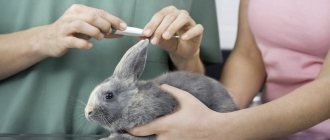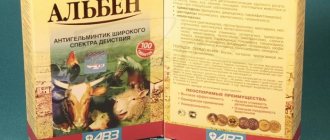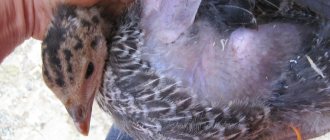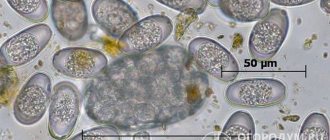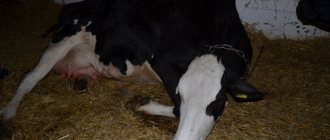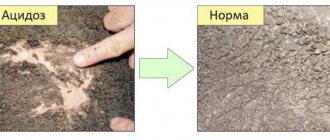Causes
Infectious stomatitis in rabbits is caused by a virus. Animals that have recovered from the disease acquire lifelong immunity, but become virus carriers. Therefore, recovered rabbits are not allowed to be bred, but are fattened and sent to the slaughterhouse. The source of infection for the rabbits is the female virus carrier. Young animals can get sick under their mother, but more often the trigger is post-weaning stress. The baby rabbit finds itself in an unusual environment, weakens and allows the virus to attack itself.
The peak of the disease occurs during the spring and autumn transitions and coincides with sharp cold snaps, weakening the body's defense systems. A healthy rabbit becomes ill three days after contact with an infected person.
The rabbit has a wet face - the main symptoms of woodlice
The final sign of stomatitis is considered to be a wet face. The initial symptoms of the disease include:
- the appearance of a white coating on the surface of the tongue of animals;
- changing the shade of plaque from white to grayish-red;
- increased salivation;
- redness of the nasolabial part;
- rabbit's wet nose;
- the appearance of sticky sputum in the fur near the oral cavity in the neck and chin;
- passivity of pets, they spend a lot of time in the corner of the cage;
- itching of the tongue, as a result of which the rabbits begin to scratch their muzzle with their paws;
- loss of appetite and sudden weight loss due to painful sensations that occur while chewing food;
- formation of purulent ulcers in the oral cavity;
- oppression;
- the occurrence of diarrhea.
As soon as the first signs of the disease are discovered, it is important to immediately take measures to cure the disease. To begin with, it is worth removing sick rabbits into separate cages. Then you should begin treating sick individuals and animals that were in the same room with infected rabbits. Woodlice in rabbits is a dangerous disease that requires immediate treatment.
Stomatitis in rabbits
Pathogenesis
On the fourth day after infection, the mucous membrane of the oral cavity begins to turn red. Salivation increases. White dots form along the borders of the tongue and upper lip, which merge into stripes and turn into a membranous membrane covering the entire oral mucosa. The tongue swells. A scarlet border appears along the edges of the formation. The color of the plaque gradually changes, becoming bright yellow or brown. The film is then sloughed off, forming red sores. An abscess forms on the tongue. On the seventh day, saliva moistens the fur around the mouth. When eating food, slurping sounds appear.
Plaque color turns yellow
The little rabbit weakens, hides in the twilight, and the act of swallowing becomes painful. Diarrhea develops, which stops after the rabbit refuses food. In a benign course of the disease, the animal recovers without treatment within 10–14 days, but fragments of glued fur remain visible for a long time. The malignant form ends in death within 4–5 days.
After recovery, fragments of fur remain visible for a long time
Prevention against stomatitis in rabbits
When symptoms of the disease are detected in one of the individuals, it is necessary to protect healthy rabbits from contact with it. At the same time, it is necessary to monitor the quality of the feed. If there is a lot of debris or insects in the grain crops, it is better to change the supplier. The rabbit's diet must contain the necessary vitamins and minerals. Weakened immunity is the first reason for the spread of the disease.
It is necessary to comply with sanitary standards for keeping pets and clean enclosures and cages in a timely manner. Twice a year, the animal’s house needs to be completely disinfected.
As a preventive measure, the oral cavity of rabbits is wiped with a decoction of an anti-inflammatory collection. You can also add iodine or potassium permanganate to your pet’s water (no more than 5 drops per 10 liters). Prevention should be intensified in early spring and autumn, since this is the most favorable time for the spread of the stomatitis virus.
Diagnostics
To determine the cause of the disease, it is enough to conduct a clinical examination. An accurate diagnosis is made if the following signs are present:
- Age 3–14 weeks.
- Copious salivation.
- Inflammation processes on the oral mucosa.
- Formation of ulcers.
- The appearance of an intense white coating.
Diarrhea develops only after passing through all of the above stages. With other diseases, diarrhea and other symptoms develop in parallel.
Forms of the disease
In rabbits, there are two forms of stomatitis, depending on which different treatment is carried out.
Light form
The disease can go unnoticed and go away in two days. Upon careful examination, small ulcers are found. Moderate salivation is noted. To speed up recovery, they limit themselves to sanitation of the lips and mouth with antiseptics.
Severe form
Rabbits slurp and rub their faces with their paws. She becomes unattractive. The rabbits stop eating and quickly become skinny. If treatment is not applied, the baby may die.
Infectious stomatitis: forms of the disease and consequences
The disease has 2 forms: mild and severe. If the necessary treatment is not provided in time, then in a mild form the disease lasts 10-12 days from the onset of inflammation of the internal oral cavity or 10 after the appearance of excessive salivation.
The severe form of infectious stomatitis is characterized by death: the animal dies on the 5th day. The form of the disease depends on the activity of the virus and timely intervention. If you do not treat your pet, the chance that the disease will become severe increases dramatically. Also, the disease can worsen if sanitary standards for keeping rodents are not observed. Among the violations are the following:
- excessive crowding of rabbits;
- sudden changes in temperature and humidity;
- unbalanced diet;
- dirty cage.
If kept incorrectly, there is a risk of losing the rabbits.
Treatment in the first stages of the disease and prevention of stomatitis will help avoid serious losses.
Stages of the disease
It is possible to divide the disease into stages in severe cases. The following phases of the pathological process are distinguished:
- Initial. It lasts for about a week. It ends with the formation of an ulcer on the tongue and wetting of the fur around the mouth. With unsatisfactory treatment or lack of it, it goes into the acute stage.
- A characteristic sign of the beginning of the manifest phase is slurping. From this moment on, the disease progresses rapidly and often ends in the death of the little rabbit. Treatment lasts up to two weeks. In those who have recovered, scars form on the face.
Causes and symptoms of stomatitis in rabbits
Stomatitis is an infectious disease caused by a filter virus. Characteristic signs include inflammation of the oral cavity and severe salivation. The virus lives in fluids produced by the animal body: saliva, blood or urine. Stomatitis most often affects young rabbits or pregnant rabbits. The immunity of rabbits during these periods of life is weakened, therefore, during birth, rodents are especially sensitive to the disease. The most favorable time for stomatitis is autumn and spring. The symptoms of the disease are vivid and difficult to miss even for an inexperienced rabbit breeder:
- inflammation of the oral cavity;
- mucous coating on the tongue;
- wet muzzle, hair sticks together not only on the head, but also on the chest;
- the mouth is covered with white films;
- the animal moves little and sleeps a lot;
- poor eating and weight loss;
- stomach upset;
- chewing movements.
One of the most common causes of infectious stomatitis on a farm is an infected rabbit.
It is worth noting that in most cases, stomatitis is not a serious disease and is rarely fatal. A pet can get it without proper treatment, but this makes it a lifelong carrier of the infection. It is extremely difficult to determine an inactive virus in the blood of an animal; usually pet owners learn about infection through experience.
For decorative breeds, stomatitis does not pose a particular threat: in good conditions, the infection will not manifest itself and it is not dangerous for humans. On large farms, on the contrary, infectious stomatitis is an extremely unpleasant disease. The infected individual must be isolated immediately, otherwise the filter virus will spread to everyone. If a rabbit is bought at the market or brought in for mating from outside, it is better to inquire whether the animal has a similar virus in its blood.
Most often, infection occurs due to contact of the skin of a healthy rabbit with the mucous membrane of a sick one. Eared animals love to lick and bite each other, which is what can cause the spread of the disease. You can also accidentally introduce stomatitis with low-quality food contaminated with other animals or insects.
If the treatment of stomatitis takes too long and the rabbit’s inflammation does not go away, you can try changing food suppliers. Before this, enclosures, cages and feeders should be thoroughly disinfected. Prolonged stomatitis can be caused by other illnesses, such as colds or allergies. If your pet has a runny nose or watery eyes, you should consult a veterinarian.
Treatment
Although infectious stomatitis in rabbits is caused by a virus, treatment is carried out with antibiotics, since the main damage is caused by the attached secondary microflora. The optimal way to treat rabbit stomatitis is to irrigate the mucous membrane with an antiseptic or apply an antimicrobial ointment. Potassium permanganate, a once universal remedy acting on viruses, bacteria and fungi, has disappeared from pharmacies. Therefore, stomatitis can be cured using the following remedies:
- Streptocide ointment.
- Penicillin ointment.
- Baytril or its analogues - Enrofloxacin, Enromag, etc.
- Sulfadimezine drops.
Streptocidal ointment
Intramuscular injections of antibiotics of the penicillin or fluoroquinolone group are allowed. Duration of treatment is 2–3 days. If no effect is observed, change the antibiotic. Rabbit breeders report successful treatment of stomatitis with Apidermin, a product made from bee products.
Apidermin
The area around the muzzle that receives saliva is moistened with a 2% solution of copper sulfate pentahydrate twice a day until the desired result is achieved. Regardless of whether copper sulfate was used or not, the rabbit will have scars and the hairs will remain stuck together for a long time.
After treatment with antibiotics, dysbiosis may develop, manifested by diarrhea. In this case, probiotics are used, for example, Vetom. Rabbit breeders report the need to use immunocorrective drugs - Roncoleukin, Phosprenil, etc. For productive animals this is not practical for economic reasons. To improve the health of decorative rabbits, the use of such products will be useful. True, recovered individuals cannot be allowed to breed.
What needs to be done to cure stomatitis in rabbits
There are no drugs to combat the virus; treatment is aimed at relieving inflammation in the animals’ mouths and preventing complications.
There are no drugs to combat the virus; treatment is aimed at relieving inflammation in the animals’ mouths and preventing complications
Therapy should be started at the first symptoms of the disease. It is necessary to treat the mucous membranes with medications, and also to feed the animals with easily digestible, soft food, and drink milk (20-30 ml per individual per day is enough).
Treatment of ulcers with infectious stomatitis
If the disease is not accompanied by a severe course, it is enough to treat the ulcers on the animal’s oral mucosa and skin using the following drugs:
- Copper sulfate . A 2% solution is used, the mucous membrane is treated with a swab or irrigated with a syringe or syringe, inserting the tip from the side where there are no teeth. The composition is prepared at the rate of 200 g of crystalline powder per 10 liters of warm water. The procedure is carried out in the morning and evening for 3 days.
- Streptocide . Powder (0.2 g) is poured into the mouth for 3 days at intervals of 12 hours. If improvement occurs, a single treatment is sufficient.
- Penicillin . An ointment based on an antibiotic and petroleum jelly is applied to the oral mucosa twice a day.
- Baytril . The veterinary drug also copes well with inflammation; the solution is injected into the oral cavity with a syringe or syringe.
To prevent ulcers from appearing on the skin, potassium permanganate is used. The solution (1%) is used to irrigate the dewlap, muzzle, and submandibular area.
Medication for infectious stomatitis
The complicated form requires the use of antibacterial drugs in the form of injections; the following is prescribed:
- Penicillin. The medicine is injected under the skin or into the muscle, the dosage depends on the weight of the animal. Baytril, Ribaflox, Bicillin are sometimes used.
- Probiotics: Olin, Lactoferon. They are indicated for restoring the mucous membrane of the digestive tract.
To activate the immune system at the onset of the disease, injections of immunomodulators are recommended: Roncoleukin, Fosprenil. Viferon ointment is suitable for rectal administration.
Traditional methods of treatment
Traditional recipes in the treatment of infectious stomatitis can be used in combination with the main therapy. To treat the oral mucosa of animals, infusions based on chamomile, sage, marigold, and oak bark decoction are used.
The compositions will help reduce inflammation, discomfort and pain.
Prevention
To prevent infectious stomatitis, you must follow the rules for keeping rabbits with adequate nutrition. It is necessary to carry out regular preventive examinations. Don't forget about scheduled disinfections. Animals that have recovered from illness should not be used to repair the herd. A disinfection barrier must be installed at the entrance to the rabbit farm.
Prevention of the disease consists in keeping rabbits comfortable
How does stomatitis become infected?
The source of infection is sick or recovered rabbits. That is why symptoms of stomatitis most often appear in young rabbits. A mother rabbit can be a source of infection. When the baby rabbit gets to a new home, that is, to you, it experiences stress and the virus becomes more active.
In rare cases, an adult rabbit can also develop stomatitis, but most often young rabbits are susceptible to this disease.
So don’t be surprised if a seemingly healthy baby suddenly begins to suffer from salivation on the 2-3rd day. Unfortunately, unscrupulous breeders breed rabbits that have had stomatitis, although this is strictly forbidden.
